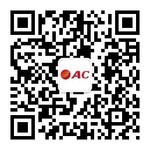LANGUAGE↓

News & Policies

Chinese Mainland Cross-border E-commerce: Export Business Development
The export value of “Made in China” consumer goods has risen steadily in the past few years, to US$776.8 billion in 2014 from US$498.4 billion in 2010, an average annual increase of 11.7% [1]. In traditional foreign trade, most of the profits go to import/export agents, wholesalers and retailers rather than manufacturers, whose returns can be quite small.
Some Chinese manufacturers have made use of online platforms to sell goods directly to overseas consumers (B2C). Most companies simply send these goods abroad by courier, as the trade is frequent but small. However, these small parcels are not subject to customs supervision, which could lead to problems in areas including customs declaration, commodity inspection, foreign-exchange settlement and tax refund. In order to further regulate the inspection and quarantine of export goods, encourage the marketing of foreign trade and facilitate e-commerce operators in tax refund claims, the Chinese government has launched pilot schemes for cross-border e-commerce in eight cities [2]. China’s free-trade zones as well as suitable cities are also allowed to carry out retail export in cross-border e-commerce.
Pilot Cities
With the rapid development of the Internet and international logistics services, online shopping has become a popular means for consumers around the world to find their favourite products. The global B2C cross-border e-commerce market is expected to grow to US$1 trillion in 2020, from US$230 billion in 2014, according to a report jointly published by AliResearch, Alibaba Group’s research arm, and Accenture. China’s cross-border e-commerce is also experiencing rapid growth. The Ministry of Commerce predicts that the import and export value of China’s cross-border e-commerce will increase to RMB6.5 trillion, representing an annual growth rate of more than 30%.
In order to strengthen the supervision of the online trading of goods, better monitor product safety and facilitate export-tax refunds for e-commerce, the National Development and Reform Commission (NDRC), the People’s Bank of China, the General Administration of Customs (GAC), and five other departments jointly issued the Circular on the Work of Promoting the Healthy and Rapid Development of Electronic Commerce (Fa Gai Ban Gao Ji No. 226 [2012]) in 2012, promoting local e-ports in relevant demonstration cities and launching pilot schemes for cross-border e-commerce. [3] The eight pilot cities for cross-border e-commerce – Shanghai, Hangzhou, Ningbo, Zhengzhou, Chongqing, Guangzhou, Shenzhen and Tianjin – can conduct retail exports through cross-border e-commerce in two ways: “general export” and “bonded export”. In addition to these eight pilot cities approved by the State Council, free-trade zones, such as the Fujian free-trade zone, and suitable cities, such as Nanjing, Qingdao, Pingtan, Yantai and Changchun, can also carry out retail export in cross-border e-commerce. The export value of cross-border e-commerce amounted to RMB2.04 billion by the end of December 2014, according to the GAC.
Supporting Policies
To further support mainland enterprises’ direct online retail sales to overseas consumers, the NDRC, the People’s Bank of China, the State Administration of Taxation (SAT), the State Administration of Foreign Exchange, and five other departments jointly issued the Opinions on Implementing Relevant Policies to Support Retail Export in Cross-Border E-Commerce (Guo Fa Ban No. 89 [2013]) in October 2013. This determined the eligible e-commerce export business operators [4], established the new model of customs supervision and inspection for e-commerce export, and supported e-commerce export enterprises in their normal foreign-exchange receipt and settlement.
Meanwhile, the SAT began to implement the Circular on Tax Policies for Retail Export in Cross-Border E-Commerce (Cai Shui No. 96 [2013]) in January 2014, granting VAT and consumption-tax refunds (exemption) to eligible goods exported via e-commerce. These policies must be implemented by enterprises that export goods by means of e-commerce in accordance with regulations.
On the other hand, the GAC began to implement Announcement No. 12 (2014) on Adding a Customs Supervision Code in February 2014 to promote the development of retail import/export through cross-border e-commerce, to help enterprises deal with customs clearance, and to facilitate the compilation of trade statistics. The additional customs supervision code “9610” is applicable to transactions by individuals or e-commerce enterprises within the customs territory through e-commerce platforms. The practice of “release upon manifest verification and consolidated declaration” was adopted for customs clearance. E-commerce enterprises, operators of premises under customs supervision, payment enterprises, and logistics enterprises that conduct retail import/export through e-commerce under the “9610” customs supervision code have to file records with the customs authorities according to regulations. They must also transmit in real time relevant order, payment, storage and logistics information to e-commerce customs clearance management platforms through e-commerce service platforms.
“General Export” and “Bonded Export”
The two types of retail export for cross-border e-commerce are “general export” and “bonded export”. At present, most enterprises sell goods to overseas consumers in the form of “general export”.
“General export” (B2C): An overseas consumer places an order on a cross-border e-commerce export platform, which then transmits the order, payment and logistics information to Chinese customs. The mainland manufacturer or trader then dispatches the goods, after packaging, to a customs supervision warehouse. After cargo examination, inspection and quarantine, Chinese customs notifies the e-commerce platform, which dispatches the order to the overseas consumer via an international logistics service.
According to reports, Zhongshan completed the export formalities for its first “general export” order in cross-border e-commerce on 31 March, 2015. It only took about one minute from the manifest being submitted to the three parcels ordered for export being released to the overseas consumer. In cross-border e-commerce, an enterprise can obtain a customs declaration form even for the export of one item. The practice of “release upon manifest verification and consolidated declaration” allows e-commerce enterprises to clear customs for goods on the manifest and make customs declarations periodically by putting different orders on the same customs declaration form, after which customs will issue the declaration stub for a tax refund. This means enterprises only need to submit a single customs declaration form each month and can handle tax refund and foreign-exchange settlements at the same time.
“Bonded export”, or “bonded reserve export” (B2B2C): Mainland e-commerce enterprises source foreign goods from different countries (B2B) in the form of “whole shipment import” and initially store them in designated bonded logistics centres of Chinese customs. When a cross-border e-commerce export platform receives orders from an overseas consumer, it sorts and packs the goods ordered and dispatches them to the overseas consumer through an international logistics service supplier in the form of B2C “split shipment export”. In this process, the goods are treated as overseas cargo and the company uses the bonded logistics centre as an overseas transit warehouse. As China’s cross-border e-commerce retail export flow runs ever more smoothly, and considering that labour costs and warehouse rentals are considerably lower on the mainland than elsewhere, some e-commerce business operators say they plan to ship the goods sourced from different countries back to China from overseas transit warehouses.
According to reports, Huangpu customs completed the export formalities for its first “bonded reserve export in cross-border e-commerce” at Humen, Dongguan on 13 May, 2015. In this case, the e-commerce enterprise stored a whole shipment of goods sourced from abroad (B2B) in the Dongguan bonded logistics centre for order fulfilment. After receiving an order from an overseas consumer, the e-commerce enterprise sorted and packed the goods ordered within the bonded logistics centre, applied directly to customs for the release of the goods and shipped the order to the overseas consumer by international courier as a standalone parcel (B2C). The entry/exit, storage and repackaging of the goods in the bonded area were all monitored by Chinese customs.
The bonded reserve export model is likely to develop into a “domestic and foreign goods bonded reserve and less than a container load (LCL) export” model in future in order to promote the diversified development of cross-border e-commerce. Chinese customs will explore the possibility of allowing mainland and overseas-manufactured goods to be stored together in the bonded logistics centre for order fulfilment. After receiving orders from overseas consumers, the e-commerce enterprise will sort the mainland and overseas goods in the bonded logistics centre. After applying to customs for the release of the goods, they will ship them as standalone parcels to overseas consumers via international couriers. This model, however, requires further study.
Export Commodity Inspection and Quarantine
The Opinions on Strengthening the Role of Inspection and Quarantine to Promote the Development of Cross-Border E-Commerce, issued by the General Administration of Quality Supervision, Inspection and Quarantine, put forward the following recommendations:
Expedite the establishment of a working mechanism for inspection and quarantine in cross-border e-commerce
Support the development of the China (Hangzhou) Cross-Border E-Commerce Comprehensive Experimental Zone
Encourage early and pilot implementation
Further delegate the power of examination and approval to local inspection and quarantine agencies
Replicate and promote the experience to other cross-border e-commerce areas
Goods for export via cross-border e-commerce are released after a centralised declaration and processing procedure is followed. Continual efforts will be made to improve the practice of supervision and spot inspection with an emphasis on quarantine supervision based on the risk level of product quality and safety. Greater efforts will be made to adopt third-party inspection, quarantine and certification results and to strengthen problem-oriented ex-post supervision on general industrial manufactured goods.
Under the Guidelines of the Hangzhou Entry-Exit Inspection and Quarantine Bureau for the Administration of Record Filing of E-Commerce Import Enterprises and Products, enterprises engaged in cross-border e-commerce import/export business must carry out record filing, including filling out the “Cross-Border E-Commerce Enterprises Inspection and Quarantine Record Filing Application Form” and the “Quality and Integrity Pledge”. The information to be filed includes basic corporate data, the name of the product, brand name, HS code, specifications, model number, country of origin and the name of the supplier.
At present, the main export goods are digital electronic products, apparel, lighting, household items, auto parts, fashion accessories, crafts, sports goods, burglar alarms, small home appliances, toys, beauty products, and photographic equipment. However, the following articles are prohibited from export in cross-border e-commerce:
Articles prohibited from entering the country
Manuscripts, printed matter, photographs, storage media for computers, and articles that involve state secrets
Valuable cultural relics and other relics prohibited as exports
Endangered and rare animals and plants and their seeds or reproducing materials
Eligibility for Export Tax Refund
Qualified cross-border e-commerce retail export enterprises are eligible for VAT and consumption-tax refund (exemption) like ordinary foreign trade enterprises. According to the Circular on Tax Policies for Retail Export in Cross-Border E-Commerce (Cai Shui No. 96 [2013]) issued by the SAT, an enterprise is eligible for VAT and consumption-tax refund (exemption) if it meets all of the following conditions:
The e-commerce export enterprise is a VAT ordinary taxpayer and has its export-tax refund (exemption) qualifications approved by the competent tax authorities
The exported goods have obtained the customs declaration form (for export-tax refund) and are consistent with the electronic information on the export declaration form
The exported goods are paid for before the deadline for the filing of a tax return for export-tax refund (exemption)
The e-commerce export enterprise is a foreign-trade enterprise and the import goods purchased have obtained the relevant VAT special invoice or special certificate of payment of consumption tax (single partition) or the Customs special certificate of payment of import VAT or consumption tax, and the content of these documents is consistent with the content of the export goods customs declaration form (exclusively for export-tax refund)
The policies on VAT and consumption-tax refund (exemption) or tax exemption are applicable to goods exported, except those that the state expressly provides no refund (exemption). The rates of export VAT refund are 5%, 9%, 13%, 15%, 16% and 17%.
Manufacturers Tapping into Overseas Retail Markets
The Chinese government has been actively developing cross-border e-commerce and encouraging manufacturers to develop overseas retail markets in recent years. It has clearly spelled out its tax refund (exemption) policies in support of retail export in cross-border e-commerce, adopted the practice of “release upon manifest verification and consolidated declaration” for customs clearance, simplified the customs declaration and tax refund formalities for goods export, and reduced the export costs of small and medium-sized enterprises. The fact that enterprises engaging in cross-border e-commerce only need to file the export goods for record and the inspection and quarantine authorities are only required to conduct spot checks based on the risk level of product quality and safety has accelerated the customs-clearance process. At the same time, the professional services provided by the cross-border e-commerce export platforms, such as foreign-language expertise and logistics and distribution services, all help towards the streamlining of international trade.
Small and medium-sized manufacturers can make use of cross-border e-commerce to shorten the foreign-trade process and reduce intermediate links, thus securing a bigger profit margin. The export cycle in traditional foreign trade typically involves the following parties: Chinese manufacturer → Chinese exporter (dealer, agent, etc.) → foreign importer → foreign wholesaler (dealer, agent, etc.) → foreign retailer → overseas consumer. The intermediate parties often take most of the profits. The mainland government encourages retail export in cross-border e-commerce, which only involves the following parties: Chinese manufacturer → cross-border e-commerce export platform → overseas consumer. Manufacturers will be able to increase their profits by selling goods directly to overseas consumers and minimising the involvement of intermediate parties.
At present, the majority of Chinese manufacturers that export goods by retailing through cross-border e-commerce have value-for-money as their selling point. Faced with competition from manufacturers in Southeast Asia, mainland manufacturers must build up their brand names and continually improve the quality of their products in order to secure a firm foothold in the international market in the long run.







